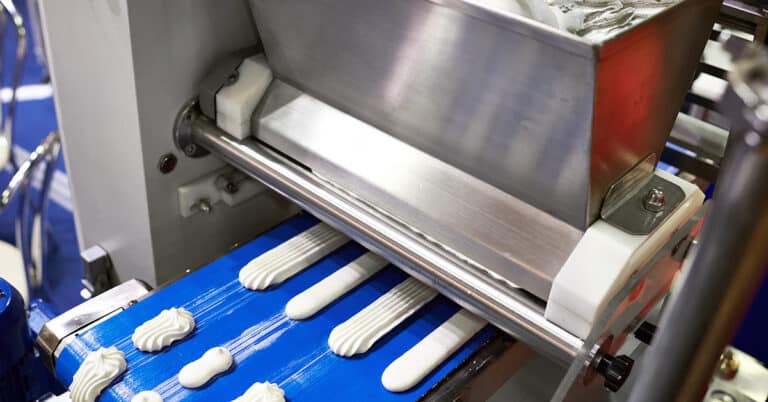A lot of components must come together to produce a quality product at a target cost. Making this all happen, consistently, is the job of the manufacturing process control plan.
This blog explains what a process control plan is and why every manufacturer should use one. It also reviews the main steps involved in developing and putting a plan in place.
What is a process control plan?
A process control plan for manufacturing defines what will be done to ensure the final product conforms to specifications and meets customer requirements. Addressing each step in the sequence of production operations, but focusing on those with the biggest impact on quality, it defines the checks and actions needed.
A process control plan defines critical control points (CCPs) throughout the manufacturing process. These are places where special checks or controls are needed to prevent the manufacture of defective product, and to find nonconforming product before more work is done to it.
The importance of process control plans
After implementing a control plan for production, a manufacturer will suffer less waste. Variation will be reduced and defects will be largely prevented. If they do occur, they will be found quickly, before more value is added.
Less waste means lower costs. Higher first-time yields reduce material consumption, and machines have more capacity as they spend less time creating defects or working on defective product. As a result, schedule adherence improves and customers receive their orders on time. The result is increased customer satisfaction and a more competitive position.
Steps for setting up a process control plan
Select a group of people who know the product and the manufacturing processes, and with the expertise to determine appropriate measures to implement at the CCPs. If one is available, a reliability engineer is always a good addition to the team. Once briefed, the team should follow this proven process.
Identify Processes and Parameters
Along with defining process inputs and outputs, make sure the process is understood. If a flow chart is not available, creating one gets the team briefed and aligned.
Pull in as much information as possible regarding product specifications, quality standards and the capability of each operation in the manufacturing process. This could include the results of FMEA exercises, along with SPC and machine reliability data.
Define Measurement Methods and Equipment
Having identified where and how particular product features are created, the team determines ways of obtaining data that confirms its compliance to specifications. This could mean sampling or screening inspections, or taking machine data from process controllers or industrial sensors installed at key locations.
If sensors are needed but not available, their implementation becomes part of the plan.
Establish Control Limits
For each process, determine the acceptable operating range. This might be limits on fill quantity, position of a label, or the roughness of a surface finish. Verify the sensors used have sufficient resolution for the task.
Notice how this links to capability of the process and to machine condition. A machine with substantial wear may not be able to hold tight tolerances unless it receives some maintenance attention.
Develop Monitoring and Control Procedures
If quality is to be verified by inspection at the CCPs, will it be by sampling or 100% inspection? Alternatively, can poka-yoke devices be implemented to prevent errors?
SPC is appropriate for some processes, using warning and action limits to determine when it’s trending outside the acceptable range. Machine condition sensors used for maintenance could also indicate impending process problems.
Implement Response Actions
Whenever a problem is detected, a response is needed. This could range from making an adjustment to the process to raising a maintenance work order for a repair or adjustment.
Once an appropriate response to an out-of-range or other problem is determined, this should be documented so it can be followed consistently.
Train Employees
Having determined control procedures and appropriate responses, the people involved must be trained. This extends to ensuring every maintenance technician has the skills necessary to keep machines operating as needed.
Document and Communicate the Plan
A process control plan must be first documented and then shared with the people who will be affected by it or expected to operate some aspect of it.
Training can be provided in the classroom or on the production line. Some manufacturers use connected worker platforms where documents and other information needed to do their jobs are provided electronically via tablet.
Best practices in process control planning
Consider creating a maintenance process control plan as part of or an addendum to the main control plan. Machine condition is a core component of safe, defect-free production, and a plan focusing on maintenance will help ensure it gets the attention it deserves.
The best way of creating a process control plan is to establish a team drawn from functions such as manufacturing, quality and maintenance. This ensures no areas or aspects are overlooked and creates buy-in for the implementation stage.
A process control plan should be developed when:
1. Designing the process to make a new product.
2. Changes are needed to an established process. This could result from a product design modification, new equipment being introduced, or a substantial revision to a manufacturing operation.
A process control plan is a living document. It should be constantly updated as new information comes to light that requires changes.
Get help to improve maintenance effectiveness
A manufacturing process control plan is a tool for driving down waste and protecting the customer from substandard or nonconforming product. By defining checks and actions needed at CCPs, it ensures manufacturing, and the associated support functions, understand what is needed from them and when.
Machine condition has a significant impact on process and product variability. Accordingly, maintenance must be part of the plan. A closely linked maintenance process control plan may even be warranted.
As a pioneer in the field of outsourced industrial maintenance, ATS helps manufacturers improve their management of vital production assets. Contact us for more information.






